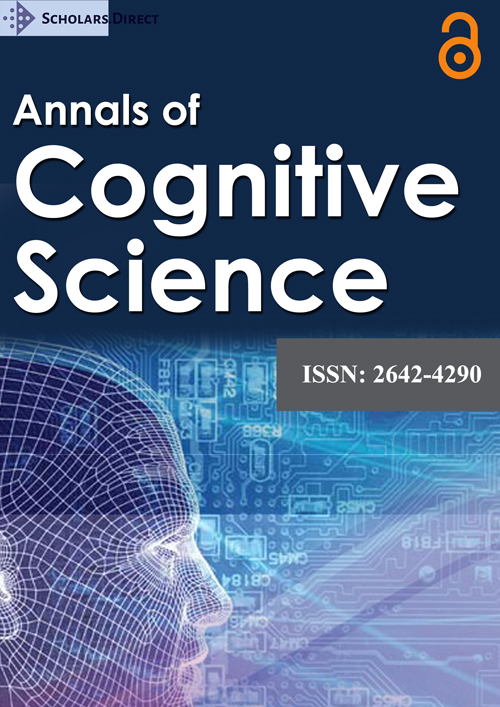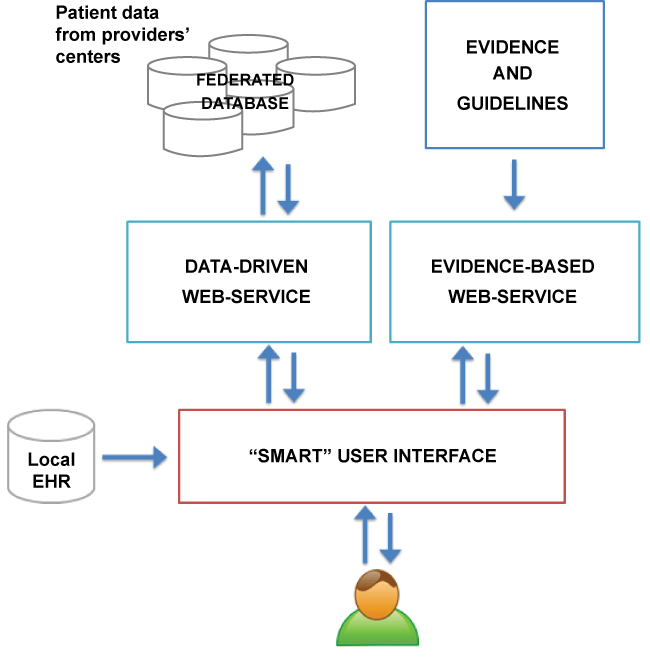Clinical Decision Support Systems for Child Neuropsychiatric Disorders: The Time has Come?
Abstract
Great advances in molecular biology, genetics and imaging serve to enhance the desire to develop multi-level and multi-scale models for "personalized medicine" but they remain very challenging for high prevalence, high impact childhood onset neuropsychiatric disorders.
We currently have the capacity to develop innovative, effective and efficient clinical decision support models, while also creating the opportunities for rapidly incorporating multi-scale, multi-level data as they become available in the very near future. Sensitive to these complex issues, this paper discusses how these existing resources can be used to develop state-of-the-art clinical decision support models that will improve patient care and reduce costs in primary care and specialist settings in the present while creating a mechanism for adding biomarker and other data as it emerges.
The new clinical decision support system for child and adolescent mental disorders needs to integrate existing heterogeneous, geographically distinct, current and historical patient-specific and population-specific data in order to generate new information and models for clinic decision support at the level of the individual patient, using the already available informatics frameworks.
Keywords
Children and adolescents psychiatry, Neuropsychiatric disorders, Personalized medicine, Clinical decision support system
Introduction
Each year, more than 20% of the children suffer from developmental, emotional or behavioral problems and one in eight children have a clinically diagnosable mental health disorder [1]. This large number of children and adolescents affected by mental health disorders poses significant challenges to the primary care and specialized psychiatric services with less than one third of all cases receiving any treatment, suggesting a considerable level of unmet needs [2]. Moreover, numbers of suitably trained specialist providers (i.e. child and adolescent psychiatrists and psychologists) are inadequate and their distribution is inequitable with delivery of mental health care still relying heavily on the presence of psychiatrists [3].
Another major problem is poor communication between services involved. The lack of knowledge, inadequate training, limited resources and inconsistent policies often result in delays in obtaining treatment, low quality or ineffective treatments, or no treatment at all. Frontline health providers need on-going support, while lack of information contributes to errors that are costly in terms of disability and excess expense [4].
Decision-making in child and adolescent psychiatry is not easy for a variety of reasons, including historical limits in psychiatric clinical records due to sensitivity of information. Empirical approaches to phenotyping symptoms and syndromes, as well as newly developed biological and developmental frameworks for disorder are opening vast new opportunities for psychiatric diagnosis and treatment. Unfortunately, this information is not readily available to health care providers, such as primary care providers (PCP), due to limited or no training about psychiatric disorders. In current, daily clinical practice, electronic health records (EHR) make psychiatric clinical information readily available for PCP's and others but they have limited capacity to use it for prevention and early intervention, especially for childhood-onset neurodevelopmental disorders.
Mental health informatics is a branch of clinical informatics that aims to integrate the unique needs and context of mental health with health informatics. Mental health informatics includes "domain-specific" electronic health records (EHR), electronic versions of standardized diagnostic assessments (i.e. The Development and Wellbeing Assessment) telehealth and sophisticated health IT components like clinical decision support system (CDSS). CDSS uses computerized databases to match individual patient characteristics and clinical data to existing knowledge about diagnostic findings and treatment guidelines [4]. At present, there are several clinical decision support systems (CDSS's) available for child neuropsychiatric disorders [5-10]. Unfortunately, almost all share major shortcomings, such as poor integration of patient demographic information with current and historical patient-specific, as well as population-specific data; a tendency to focus on only one specific psychiatric disorder; poor integration with the heterogeneous data sources and lack of attempts to develop predictive models for diagnosis and intervention [4].
Modern CDSS for child neuropsychiatric disorders
The new CDSS for child neuropsychiatric disorders, being based on integrated existing heterogeneous, geographically distinct, current and historical patient-specific and population-specific data, can generate new information and models for clinic decision support at the level of the individual patient.
The new support system should be based on the established IT (information technology) and knowledge: (i) evidence-based models using well-established, continuously revised and accurately selected guidelines; (ii) standard formats and methods for guidelines formalization/implementations; (iii) case-based reasoning (CBR) algorithms; (iv) data model to store de-identified patient data (cases); (v) IT framework to manage federated clinical database from different sites/country; (vi) IT interoperability protocol to exploiting data already stored in local EHRs (Figure 1).
The user interface should be able to retrieve patient data directly from EHR and SMART technology (Substitutable Medical Apps, Reusable Technologies). SMART is a platform for reusable medical apps that can run on participating systems connected to various EHRs. SMART is fully integrated in i2b2 (Informatics for Integrating Biology and the Bedside), supporting "deep dives" into the patient record directly from i2b2. I2b2 is a database system that facilitates sharing and reuse of patients' clinical data collected in individual clinic settings. I2b2 provides an ontology-based, object-oriented database system with simple, flexible database schema thus enables facilitating access to individual and aggregated clinical data across different clinic settings.
The new CDSS for child neuropsychiatric disorders should be able to provide practitioners working with their own individual patients to request both evidence-based recommendations and data-driven suggestions. The data-driven web-service could retrieve similar patients from the anonymized patients stored in the federated database of cases, based on data from providers' centers. The evidence-based web-service should also include all available, well-established models and guidelines. The technological implementation of the new CDSS could be divided into three main activities: creation of a federated database of clinical cases, implementation of the digital models and implementation of the CDSS user interface.
Creation of a federated database of clinical cases
The new CDSS should create a federated database with anonymized data from different types of child psychiatry clinical care and research databases. Using Big Data approaches and crowd-sourced knowledge from different institutions, a multi-dimensional federated database that encompasses the core clinical knowledge about children and adolescent with psychiatric disorders care could be created. The database could support a data-driven, case-based reasoning approach in order to not only validate but also extend the recommendations from the evidence-based models used by the new CDSS. The general architecture should follow the i2b2/SHRINE model that has been successfully applied in numerous international projects [11].
Implementation of the digital models
The CDSS for child neuropsychiatric disorders could use two different web-services with a system interface that would provide decision support to the user. The first web-service should implement the computational models of the clinical practice guidelines for the diagnosis and treatment of child adolescent mental disorders, beginning with the most up-to-date revised and updated guidelines available. Recently, Open EHR's Guideline Definition Language has been defined in an attempt to provide reusable models (archetypes) for representing guideline-related concepts. It would be advisable for the new CDSS to adopt such a framework for the knowledge representation, especially because we can build on the inference engines that have already been developed, based on those arche types.
The second web-service should implement a data-driven model to support clinical decisions. In particular, the new CDSS should implement an algorithm that will provide the user with information derived from all cases in the federated dataset that are similar to the clinician's patient of interest. An algorithm for CBR should retrieve similar patient profiles from the anonymized patient cohort database. The retrieved information regarding the similar cases should then be used to support the decisions of the end-user.
Implementation of the CDSS user interface
SMART technology facilitates two versions of the new CDSS user interface. SMART provides a set of services that enable efficient data capture, storage, and effective data retrieval and analytics, which would be scalable to the national level but nonetheless respectful of institutional autonomy and patient privacy [12]. The first version should be a full web-tool, enabling end-users to profile a patient, to store the patient data and to support decisions regarding diagnosis/treatment. This version should enable the end-user to build a user's and a specific patient's profiles, store of both user personal data and patient data in a database, request a recommendation from the evidence-based web service, receive and visualize the requested recommendation, request information on similar cases from the data-driven web service for case-based reasoning and receive and visualize useful information regarding the most similar, retrieved cases. The second version of the web-application could provide a standard interface to allow integration with the end-users local EHR systems. This integration would avoid the user having to enter patient data, which will be automatically retrieved from the local EHR, thus significantly increasing system efficiency and usability, as well as end-user uptake.
Conclusions
CDSS for child neuropsychiatric disorders should promote evidence-based, best practices, while enabling consideration of national variation in practices; leverage data-reuse to generate predictions regarding treatment outcome; address broader of clinical disorders; target frontline practice environments where expertise in child and adolescent psychiatry is very limited and decision support is most needed.
References
- Schultz I, Krupa T, Rogers S, et al. (2012) Organisational aspect of work accommodation and retention in mental health. In: Gatchel R, Schultz I, Handbook of occupational health and wellness, Springer Science+Business Media, LLC, New York, 423-439.
- Wittchen HU, Jacobi F, Rehm J, et al. (2011) The size and burden of mental disorders and other disorders of the brain in Europe 2010. Eur Neuropsychopharmacol 21: 655-679.
- World Health Organization & Wonca (2008) Integrating mental health into primary care: a global perspective. Geneva, World Health Organization.
- Koposov R, Fossum S, Frodl T, et al. Clinical decision support systems in child and adolescent psychiatry: a systematic review. (European Child and Adolescent Psychiatry, under review).
- Fortney JC, Pyne JM, Steven CA, et al. (2010) A Web-based clinical decision support system for depression care management. Am J Manag Care 16: 849-854.
- Trivedi MH, Daly EJ, Kern JK, et al. (2009) Barriers to implementation of a computerized decision support system for depression: an observational report on lessons learned in "real world" clinical settings. BMC Med Inform Decis Mak 9: 6.
- Razzouk D, Mari JJ, Shirakawa I, et al. (2006) Decision support system for the diagnosis of schizophrenia disorders. Braz J Med Biol Res 39: 119-128.
- Buckingham CD, Adams A (2011) The GRiST web-based decision support system for mental-health risk assessment and management. First BCS Health in Wales/ehi2 joint Workshop, 37-40.
- Anand V, Biondich PG, Liu G, et al. (2004) Child Health Improvement through Computer Automation: the CHICA system. Stud Health Technol Inform 107: 187-191.
- Cohen D (2015) Assessing the Effect of an Electronic Decision Support System on Children's Mental Health Service Outcomes. J Technol Hum Serv 33: 225-240.
- Kohane IS, Churchill SE, Murphy SN (2012) A translational engine at the national scale: informatics for integrating biology and the bedside. J Am Med Inform Assoc 19: 181-185.
- Mandl KD, Mandel JC, Kohane IS (2015) Driving Innovation in Health Systems through an Apps-Based Information Economy. Cell Systems 1: 8-13.
Corresponding Author
Norbert Skokauskas, Regional Centre for Children and Youth Mental Health and Welfare, Middle Norway, Norwegian University of Science and Technology, Pb 8905, Trondheim, 7491, Norway.
Copyright
© 2017 Koposov R, et al. This is an open-access article distributed under the terms of the Creative Commons Attribution License, which permits unrestricted use, distribution, and reproduction in any medium, provided the original author and source are credited.





